 November 21, 2019 John E. Ross, KD8IDJ, Editor
| ||||||
ARRL Headquarters will be closed Thursday and Friday, November 28 and 29, for Thanksgiving. The ARRL Letter and ARRL Audio News will not be available on those days. The next editions will be on December 5 and 6, respectively. We wish everyone a safe and enjoyable Thanksgiving. ARRL Legislative Advocacy Committee Drafting New Bill Addressing Antenna Restrictions The ARRL Board of Directors Legislative Advocacy Committee is in the process of drafting a new bill to address the issue of private land-use restrictions on amateur radio antennas. The proposed legislation would be the successor to the Amateur Radio Parity Act. The Legislative Advocacy Committee, chaired by Pacific Division Director Jim Tiemstra, K6JAT, will report to the Board soon, once plans are fleshed out. Tiemstra told the ARRL Executive Committee (EC) on October 12 in Aurora, Colorado, that Advocacy Committee members have traveled to Washington to meet on multiple occasions with ARRL Washington Counsel Dave Siddall, K3ZJ, told the EC last month that he understands the conditional exemption of amateur radio licensees from the RF exposure measurement requirements in the FCC's Part 97 Amateur Service rules is proposed to be removed. A Report and Order in FCC Docket WT 13-84 is making the rounds that, if adopted, would make amateur licensees subject to the same requirements as all other FCC licensees. The Report and Order is expected to be released before year's end. Siddall also reported to the EC that the FCC is poised to address the 60-meter band amateur allocation adopted at World Radiocommunication Conference 2015 (WRC-15). The National Telecommunications and Information Administration (NTIA), on behalf of US government primary users of the band, has insisted that the maximum permitted power for radio amateurs must not exceed that agreed to at WRC-15 -- 15 W effective isotropic radiated power (EIRP) or 9.1 W ERP -- despite the fact that Canada has authorized its amateur licensees to use 100 W, and eliminate the current discrete channels, which ARRL's petition proposed to retain. NTIA oversees federal government frequency allocations and users. Minutes of the October 12 Executive Committee meeting were posted this week on the ARRL website. WRC-19 Delegates Reach Agreement on 6-Meter Band in ITU Region 1 World Radiocommunication Conference 2019 (WRC-19) has approved a 6-meter allocation for International Telecommunication Region 1 (Europe, Africa, the Middle East). The decision came after more than 2 weeks of strenuous negotiations to reconcile widely disparate views of Region 1 administrations. "The result is a dramatic improvement in the international Radio Regulations for amateurs in Region 1," the International Amateur Radio Union (IARU) said in announcing the agreement.
Provisions will be in place to protect other existing services using the band in Region 1 and in neighboring countries in Region 3. The existing primary allocation of 50 - 54 MHz in Regions 2 and 3 is unaffected. The decision on WRC-19 agenda item 1.1 is the culmination of years of effort by the IARU and its member-societies. Delegates this week faced a daunting workload as they tried to reach consensus on several remaining issues, including the agenda for the next WRC. The final session of the conference plenary to approve texts for inclusion in the Final Acts of the conference was set to wrap up on November 21. As of the end of last week, no choices had been made as to which of more than three dozen proposed topics will end up on the agenda for World Radiocommunication Conference 2023. Each proposed agenda item would require studies to be conducted between 2020 and 2023, but International Telecommunication Union (ITU) resources will not accommodate more than about half of the proposals. Some face strong opposition, while others remain ill-defined even at this late stage of the conference.
With the 50 MHz issue settled, the IARU team devoted most of its energy to explaining why the proposed Radionavigation Satellite Service (RNSS) agenda item for 1240 - 1300 MHz is unnecessary and undesirable. At issue is compatibility between radio amateurs, who are secondary on 1240 - 1300 MHz, with Galileo RNSS (GPS) system receivers. The amateur community has advocated that this matter be dealt with through existing ITU processes rather than the 4 years of study that an agenda item would entail. Read more. Radio Amateur's "Tribute to a Century of Broadcasting" Video Debuts on YouTube Art Donahue, W1AWX, of Franklin, Massachusetts, has posted his "Tribute to a Century of Broadcasting" video in recognition of the centennial of formal radio broadcasts. The video features a complete scan of the AM broadcast band (530 - 1700 kHz), with station IDs for Donahue told ARRL he recorded these off the air using two long-wire antennas in the trees. Each slide highlights one station on each frequency with call sign, location, power, day/night/gray-line reception, distance, and year of first broadcast, accompanied by audio of an actual station identification. "If you ever spent evenings when you were a kid trying to hear long-distance radio stations on your AM radio, this video has what they all sound like today," Donahue said. "I wanted to do something in honor of the KDKA broadcasting centennial next year and thought I'd try to get every single channel recorded. It took a lot of time, patience, and good luck. You'll hear a lot of surprises on the video." Donhaue added, "It was a fun project to work on." The Doctor Will See You Now! "Big Wire Antennas" is the topic of the new (November 21) episode of the ARRL The Doctor is In podcast. Listen...and learn!
Every 2 weeks, your host, QST Editor-in-Chief Steve Ford, WB8IMY, and the Doctor himself, Joel Hallas, W1ZR, will discuss a broad range of technical topics. You can also email your questions to doctor@arrl.org, and the Doctor may answer them in a future podcast. Enjoy ARRL The Doctor is In on Apple iTunes, or by using your iPhone or iPad podcast app (just search for ARRL The Doctor is In). You can also listen online at Blubrry, or at Stitcher (free registration required, or browse the site as a guest) and through the free Stitcher app for iOS, Kindle, or Android devices. If you've never listened to a podcast before, download our beginner's guide. Melissa Stemmer Joins ARRL Headquarters Staff as Development Manager Connecticut native Melissa Stemmer has joined the ARRL Headquarters staff as Development Manager. Born and raised in Waterbury, Stemmer earned a bachelor's degree in pharmacy from the University of Connecticut in 1998, and she worked in that field for more than 15 years. After deciding that a career change was in order, "I am so excited to be on this journey at ARRL, and I am looking forward to getting to know everyone," Stemmer said. Before coming to ARRL, she was the development director at Seven Angels Theatre in Waterbury. In September 2015, Stemmer signed on as coordinator of the theatre's annual High School Halo Awards -- the largest high school theatre award program in Connecticut. During her tenure at Seven Angels Theatre, Stemmer was an active member of the Waterbury Regional Chamber and the Waterbury Exchange Club. She served on the executive committee and governing council of the Arts and Culture Collaborative of the Waterbury Region and was a member of the Young Professionals Task Force of the Waterbury Region. Youth on the Air Camp Coming to the Americas The Electronic Applications Radio Service (EARS) has announced that the first Youth On The Air (YOTA) camp in the US is set to take place in June. Sponsors hope the camp will become an annual event.
According to the announcement, the camp will focus on building peer and mentor relationships and taking amateur radio "to the next level." Campers will learn and exercise on-the-air skills at special event station W8Y. For more information, email Camp Director Neil Rapp, WB9VPG, or call (812) 327-0749. (Read more.) Southern California Hams Support Major Terrorist Attacks Response Drill Seventy southern California amateur radio volunteers deployed to 30 local hospitals, clinics, and city emergency operations centers on November 6 to support public safety and emergency medical functions during a mock terrorist response drill that tested law enforcement and medical treatment facilities in San Diego County. The scenario was a coordinated attack at two locations 50 miles apart that resulted in mass casualties and inundated local emergency departments with 1,000 volunteer actors suffering from simulated injuries and frantic families (also actors) trying to locate loved ones. One simulated attack occurred at California's LEGOLAND theme park, which closed for a half day to support the exercise. The other simulated attack occurred at a 20,000-seat amphitheater. During the Participants included hams aboard the 1,000-bed US Navy Hospital Ship USNS Mercy and those who checked in via HF from across the southwestern US. Hospitals used this full-scale exercise to fulfill their annual accreditation training requirement. Recent changes in California hospital regulations require smaller medical clinics to conduct annual certification drills, and that expansion of clinic participation has led to a flood of requests for trained radio operators at hundreds of day surgery clinics and group homes not covered previously by ARES. Because demand far exceeds the availability of ARES operators for mid-week daytime drills, ARRL San Diego Section Manager Dave Kaltenborn, N8KBC, has encouraged smaller clinics and medical networks to consider developing their own internal amateur radio capabilities. Several people involved at the smaller clinics have taken classes and training provided by ARES. The exercise included cross-border participation by members of Club de Radio Experimentadores de Baja California (CREBC) at Tijuana General Hospital in Tijuana, Mexico. CREBC hams maintain an extensive Winlink and repeater network used by amateurs on both sides of the border. -- Thanks to ARRL San Diego Section Manager Dave Kaltenborn, N8KBC Dayton Hamvention® Invites 2020 Award Nominations Dayton Hamvention® is inviting nominations for its 2020 awards. Nominations are due by February 15, 2020. Awards will be granted for Amateur of the Year, Club of the Year, Technical Achievement, and Special Achievement.
Nomination forms are specific to the award. At a minimum, each form should be completed with the information indicated. Provide contact information for the person making the nomination. Submit forms via email or via USPS to Hamvention, Attention: Awards Committee, Box 964, Dayton, Ohio 45401-0964. The Awards Committee will make its selections and announce the recipients along with details on their accomplishments. An honors convocation and award presentation will be held on the Saturday evening of Hamvention. Award presentations will also take place at Hamvention on Sunday afternoon, prior to the prize award activity. For more information, contact the Dayton Hamvention Awards Committee. The K7RA Solar Update Tad Cook, K7RA, Seattle, reports: Still no sunspots since November 2. Average daily solar flux during the reporting week dipped slightly from 70.3 to 69.9. Geomagnetic conditions were quiet, with the average daily planetary A index dipping from 4 to 3.6, and the average mid-latitude A index going from 3 to 2.3.
The predicted planetary A index is 20, 16, and 10 on November 21 - 23; 8 on November 24 - 25; 5 on November 26 - December 12; 6 on December 13; 5 on December 14 - 15; 8, 15, 20, 18, and 10 on December 16 - 20; 8 on December 21 - 23, and 5 on December 24 - January 4. Sunspot numbers for November 14 - 20 were 0, 0, 0, 0, 0, 0, and 0, with a mean of 0. The 10.7-centimeter flux was 69.9, 70, 69.7, 70.1, 70.4, 69.2, and 70.2, with a mean of 69.9. Estimated planetary A indices were 4, 4, 6, 5, 2, 2, and 2, with a mean of 3.6. The mid-latitude A index was 3, 2, 5, 3, 1, 1, and 1, with a mean of 2.3. A comprehensive K7RA Solar Update is posted Fridays on the ARRL website. For more information concerning radio propagation, visit the ARRL Technical Information Service, read "What the Numbers Mean...," and check out K9LA's Propagation Page. A propagation bulletin archive is available. Monthly charts offer propagation projections between the US and a dozen DX locations. Share your reports and observations. Just Ahead in Radiosport
See the ARRL Contest Calendar for more information. For in-depth reporting on amateur radio contesting, subscribe to The ARRL Contest Update via your ARRL member profile email preferences. Alaska and Tennessee Getting New Section Managers Two new Section Managers (SMs) have been declared elected in the just-concluded fall election cycle. Ballots for the Alaska and Tennessee Section Manager elections were counted on November 19 at ARRL Headquarters. Eight incumbent Section Managers ran without In a very close race in Alaska, David Stevens, KL7EB, received 98 votes, and his opponent, Lara Baker, AL2R, received 88 votes. Both are from Anchorage. Stevens served previously as Alaska's SM, from 1984 until 1985; from 1998 until 1999, and from 2002 through 2007. Stevens takes over as Section Manager from Ray Hollenbeck, KL1IL, of Wasilla, who has led the Alaska Section for the past 4 years. In Tennessee, David Thomas, KM4NYI, of Knoxville, outpolled Charles Talley, KJ4KVC, of Lyles, 557 to 417. An active member of the Radio Amateur Club of Knoxville, Thomas serves on the club's Repeater Committee as a hands-on technician for the club's repeater suite. He enjoys restoring tube-type ham gear, operating HF, 6 meters, and digital modes. Thomas will be taking the reins of the Tennessee Field Organization from Keith Miller, N9DGK, of Rockvale, who decided not to run for a new term. Miller has served as Section Manager since 2012. These incumbent Section Managers were the only candidates in their respective sections and have been declared elected. JVann Martin, W4JVM (Alabama); Bill Duveneck, KB3KYH (Delaware); Jim Siemons, W6LK (East Bay); Ron Cowan, KB0DTI (Kansas); Jim Kvochick, K8JK (Michigan); Bill Mader, K8TE (New Mexico); John Kitchens, NS6X (Santa Barbara), and Ray Lajoie, KB1LRL (Western Massachusetts). Why Propagation Repeats About Every 27 Days The sun rotates in about 27 days, but different solar latitudes rotate with different periods. This is why propagation repeats roughly every 27 days, as NASA explains.
The source of this "differential rotation" is an area of current research in solar astronomy. -- Thanks to The ARRL Contest Update and NASA In Brief...
Upcoming ARRL Section, State, and Division Conventions
Find conventions and hamfests in your area.
. .
Subscribe to...
Free of charge to ARRL members...
| ||||||
 members of Congress and their staffs to inform them of the committee's plans.
members of Congress and their staffs to inform them of the committee's plans. When the Final Acts take effect, 44 countries in Region 1 will have a primary allocation of at least 500 kHz, including 26 countries with a primary allocation of the 50 - 54 MHz. The entire region will have an amateur secondary allocation of 50 - 52 MHz, except in Russia, whose administration opted for only 50.080 - 50.280 MHz on a secondary basis.
When the Final Acts take effect, 44 countries in Region 1 will have a primary allocation of at least 500 kHz, including 26 countries with a primary allocation of the 50 - 54 MHz. The entire region will have an amateur secondary allocation of 50 - 52 MHz, except in Russia, whose administration opted for only 50.080 - 50.280 MHz on a secondary basis.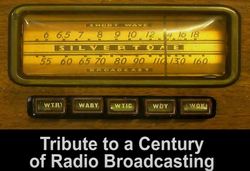 all 118 AM radio channels.
all 118 AM radio channels. Sponsored by
Sponsored by 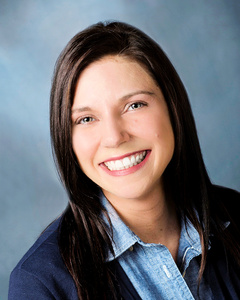 Stemmer went back to school, earning a master's in organizational leadership in 2015 from Quinnipiac University.
Stemmer went back to school, earning a master's in organizational leadership in 2015 from Quinnipiac University.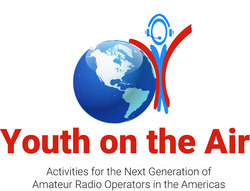 The inaugural summer camp will take place June 21 - 26 at the National Voice of America Museum of Broadcasting in West Chester Township, Ohio. The West Chester Amateur Radio Association (
The inaugural summer camp will take place June 21 - 26 at the National Voice of America Museum of Broadcasting in West Chester Township, Ohio. The West Chester Amateur Radio Association (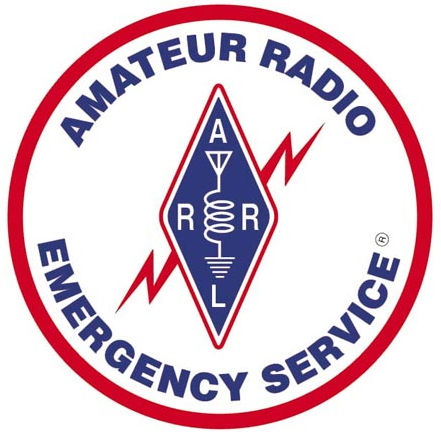 5-hour exercise, hams relayed hundreds of formal ICS 213 messages via Winlink and voice nets from hospital to hospital and from hospitals to the County Medical Operations Center.
5-hour exercise, hams relayed hundreds of formal ICS 213 messages via Winlink and voice nets from hospital to hospital and from hospitals to the County Medical Operations Center.
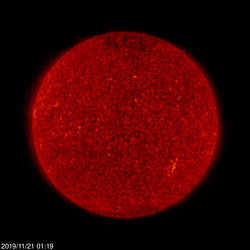 Predicted solar flux is 70 on November 21 - 22; 68 on November 23; 67 on November 24 - 27; 69 on November 28 - December 8; 70 on December 9 - 22, and 69 on December 23 - January 4.
Predicted solar flux is 70 on November 21 - 22; 68 on November 23; 67 on November 24 - 27; 69 on November 28 - December 8; 70 on December 9 - 22, and 69 on December 23 - January 4.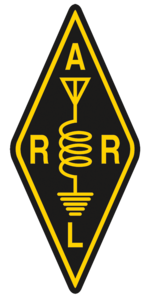 opposition during this election cycle. All terms of office start on January 1.
opposition during this election cycle. All terms of office start on January 1..jpg) The sun's rotation was first detected by observing the motion of sunspots. The sun's rotation axis is tilted by about 7.25° from the axis of Earth's orbit, so we see more of the sun's north pole in September and more of its south pole in March. Because the sun is a ball of gas/plasma, it does not have to rotate rigidly, as solid planets and moons do. In fact, the sun's equatorial regions rotate faster -- taking only about 24 days -- than the polar regions, which rotate once every 30+ days.
The sun's rotation was first detected by observing the motion of sunspots. The sun's rotation axis is tilted by about 7.25° from the axis of Earth's orbit, so we see more of the sun's north pole in September and more of its south pole in March. Because the sun is a ball of gas/plasma, it does not have to rotate rigidly, as solid planets and moons do. In fact, the sun's equatorial regions rotate faster -- taking only about 24 days -- than the polar regions, which rotate once every 30+ days. OH2BH to Be On the Air from Myanmar The government in Myanmar has given limited amateur operating privileges to Martti Laine, OH2BH. He will use XZ2D. Laine reports that authorities in the Southeast Asian nation have only permitted him to operate on 15 meters and higher, but he is hoping to obtain permission to operate on a spot frequency on 20 meters. "Getting 14.065 kHz temporarily for the duration of 48 hours would be magic," Laine said. Members of the world-wide amateur community wrote the Myanmar government to support Laine. "As Radio Arcala, OH8X remains at their Climate Park with more than 110,000
OH2BH to Be On the Air from Myanmar The government in Myanmar has given limited amateur operating privileges to Martti Laine, OH2BH. He will use XZ2D. Laine reports that authorities in the Southeast Asian nation have only permitted him to operate on 15 meters and higher, but he is hoping to obtain permission to operate on a spot frequency on 20 meters. "Getting 14.065 kHz temporarily for the duration of 48 hours would be magic," Laine said. Members of the world-wide amateur community wrote the Myanmar government to support Laine. "As Radio Arcala, OH8X remains at their Climate Park with more than 110,000 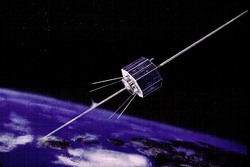 Happy 45th Birthday, AMSAT-OSCAR 7! The world's longest-lived satellite, AO-7, turned 45 years old this month. It was
Happy 45th Birthday, AMSAT-OSCAR 7! The world's longest-lived satellite, AO-7, turned 45 years old this month. It was  ARRL Self-Guided Emergency Communication Course EC-001-S is Now Available On Demand ARRL's EC-001-S online "Introduction to Emergency Communication" course is now available to students in an on-demand format, allowing students to register for the course and begin work at any time. This course is designed to provide basic knowledge and tools for any emergency communications volunteer. In response to the great course demand and to expand access to EC-001, ARRL developed a self-guided version of the course, EC-001-S, which launched in June. This version of the course is designed for those who prefer to work independently and who do not need guidance from an online mentor. EC-001-S was previously offered only during specific sessions along with the traditional mentored version. The course opened for general enrollment on November 6.
ARRL Self-Guided Emergency Communication Course EC-001-S is Now Available On Demand ARRL's EC-001-S online "Introduction to Emergency Communication" course is now available to students in an on-demand format, allowing students to register for the course and begin work at any time. This course is designed to provide basic knowledge and tools for any emergency communications volunteer. In response to the great course demand and to expand access to EC-001, ARRL developed a self-guided version of the course, EC-001-S, which launched in June. This version of the course is designed for those who prefer to work independently and who do not need guidance from an online mentor. EC-001-S was previously offered only during specific sessions along with the traditional mentored version. The course opened for general enrollment on November 6. 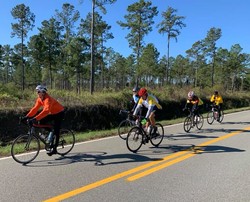 Florida and Georgia Amateur Radio Volunteers Support the Spaghetti 100 Bicycle Ride Two dozen amateur radio volunteers from the Tallahassee Amateur Radio Society (TARS) in Florida and the Thomasville Amateur Radio Club (TARC) in Georgia provided communication support for the Capital City Cyclists' 35th annual Spaghetti 100 Bicycle Ride on November 9. The Spaghetti 100 funds the Kids on Bikes program, which teaches hundreds of elementary schoolers how to ride a bicycle safely and helps to support the Trips for Kids chapter, which takes disadvantaged youth on bike rides on local trails. The hams used one of the TARS VHF repeaters to provide communication for safety and logistics, as well as for the medical and mechanical teams. Cell phone coverage is very sparse along the 100-mile route on back-country roads in northern Florida and southern Georgia. Communications Coordinator Stan Zawrotny, K4SBZ, said the importance of ham radio's traditional role in filling communication gaps was brought home to him when the land line at the ride's headquarters was out for several hours, leaving amateur radio as the only communication for some areas. "In addition to the thanks given by most of the bicyclists as they passed by, event sponsors expressed their appreciation for the work of the ham radio volunteers and were impressed with the capabilities of amateur radio," Zawrotny said.
Florida and Georgia Amateur Radio Volunteers Support the Spaghetti 100 Bicycle Ride Two dozen amateur radio volunteers from the Tallahassee Amateur Radio Society (TARS) in Florida and the Thomasville Amateur Radio Club (TARC) in Georgia provided communication support for the Capital City Cyclists' 35th annual Spaghetti 100 Bicycle Ride on November 9. The Spaghetti 100 funds the Kids on Bikes program, which teaches hundreds of elementary schoolers how to ride a bicycle safely and helps to support the Trips for Kids chapter, which takes disadvantaged youth on bike rides on local trails. The hams used one of the TARS VHF repeaters to provide communication for safety and logistics, as well as for the medical and mechanical teams. Cell phone coverage is very sparse along the 100-mile route on back-country roads in northern Florida and southern Georgia. Communications Coordinator Stan Zawrotny, K4SBZ, said the importance of ham radio's traditional role in filling communication gaps was brought home to him when the land line at the ride's headquarters was out for several hours, leaving amateur radio as the only communication for some areas. "In addition to the thanks given by most of the bicyclists as they passed by, event sponsors expressed their appreciation for the work of the ham radio volunteers and were impressed with the capabilities of amateur radio," Zawrotny said.







